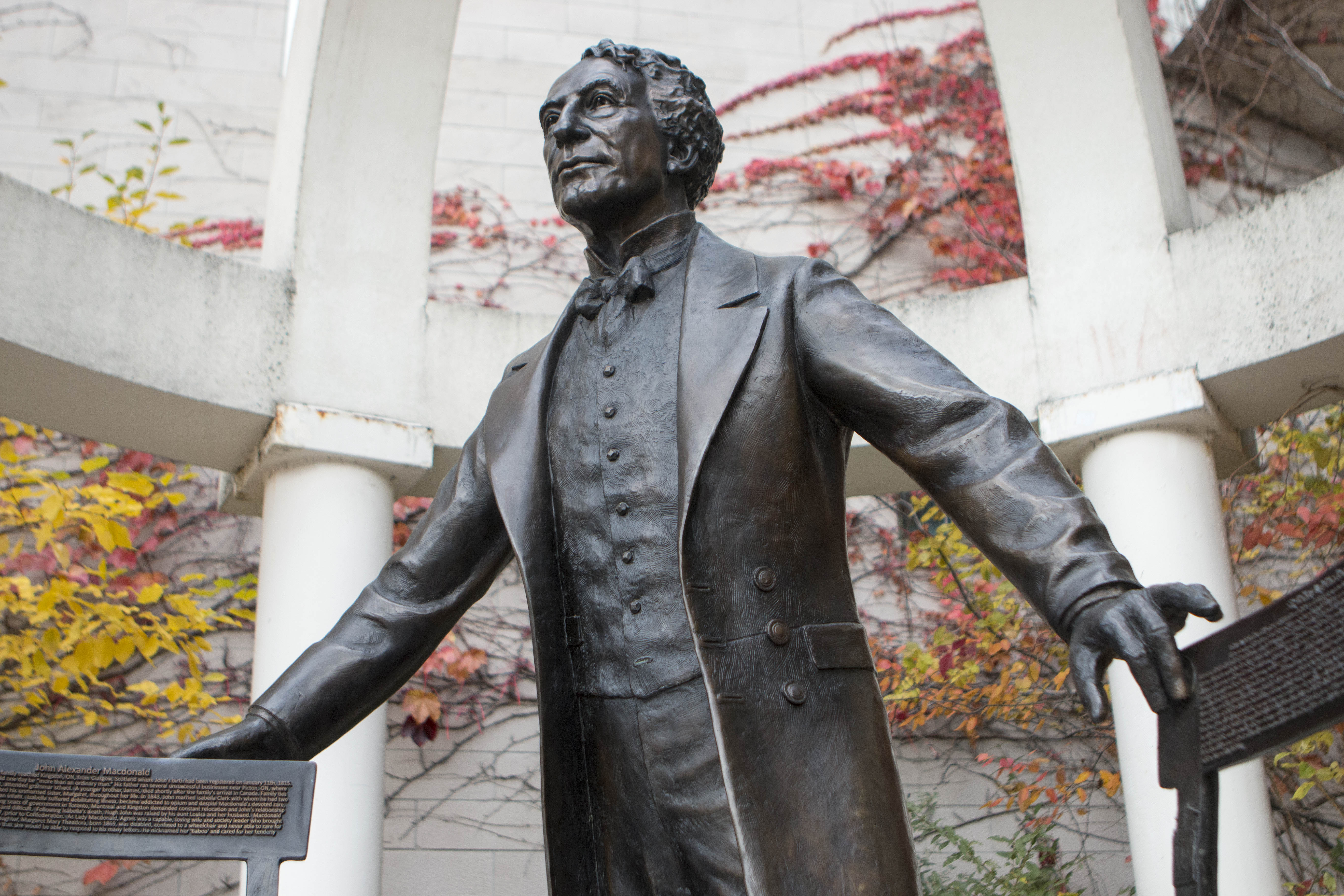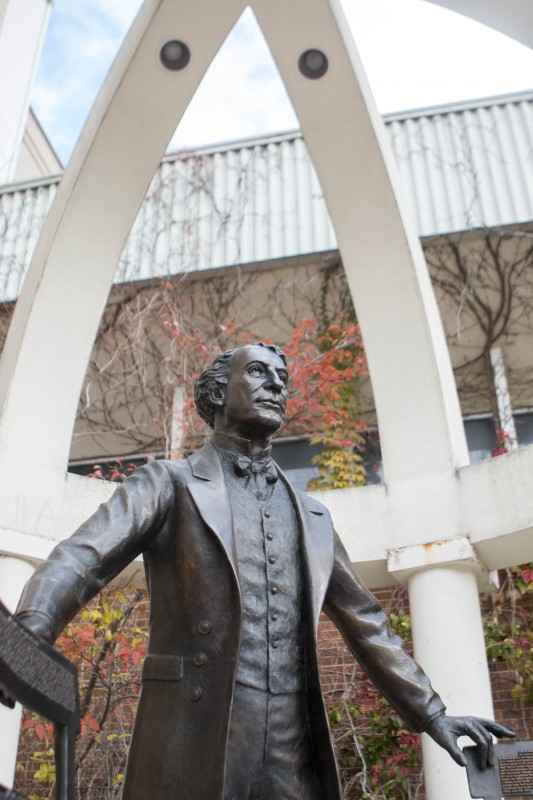Statue strife ignites campus

Wilfrid Laurier University’s Senate has voted to recommend a cancelation of the university’s Prime Minister’s Statue project.

Wilfrid Laurier University’s Senate has voted to recommend a cancelation of the university’s Prime Minister’s Statue project.
The project, originally proposed for Victoria Park in Kitchener but rejected by community members, was unveiled in June with the installation of a statue of John A. MacDonald on the school’s Waterloo campus. The remaining 21 Canadian prime ministers were to be implemented over the coming years.
The project has garnered controversy since its unveiling, with a petition started over the summer by Jonathan Finn, chair of the department of communications. Finns believes the project lacks both merit and cultural sensitivity, and should have been discussed by the campus community prior to its acceptance.
“It’s something that should have been brought up for discussion in the first place,” said Finn. “It’s the place where we all live and work, and for the students it’s the place that they play. When you’re going to be significantly transforming their environment, it just makes perfect sense that you would ask first their opinion on this matter.”
Opposition to the project is shared by many, with the petition gaining signatures from students, faculty, staff, alumni and community members. As of Tuesday night, the petition had garnered 1,179 signatures.
The petition explains the cultural insensitivity, funding issues and lack of discussion with the general
population community. It finishes by saying, “In these ways and others, this project is an embarrassment to the University and the larger community and should be stopped immediately.”
Among those who supported Finn’s presentation to Senate was Jaydene Lavallie, a fourth-year global studies student who identifies as Métis and doesn’t consider the history represented by the statues a true depiction of Canada’s history.
“In my opinion, if you’re putting up these statues you’ve already chosen a side,” said Lavaille. “If we want to look at history, we can look back and see good and bad on either side perhaps, but when you have a conflict and you erect statues to one side of that history, you’re already giving preference to that side.”
Not all students agree that the statues depict a negative attitude. A second petition launched last week in support of the project have garnered hundreds of signatories in mere days. As of Tuesday evening, 475 people signed the petition.
The petition states that awareness of Canada’s history is crucial for effectively moving forward, and that these statues will allow students to critically analyze the actions of Canada’s past leaders and their lasting effects.
It also reads, “According to the logic set fourth by professor Finn’s statement, the very existence of a university named after Sir Wilfrid Laurier on what he considers to be First Nations land is a problem, which would undermine the entire university as a whole.
Ironically, Dr. Finn seems fine with the idea of teaching his classes on this land, and happily gets paid to do so.”
“Students who are against the John A. MacDonald statue, they put up a sign explaining the fact that he was okay with the wrongful mistreatment of First Nations, and I’m actually okay with that because it starts the discussion,” said Spencer Gibara, a fifth-year political science student and creator of the Keep the Statues petition.
“And for me, I always viewed him as just the founder of Canada, but it’s clear that people view him in different ways, and he’s not one of these things, he’s all of these things.”
Though Senate has issued the recommendation to terminate the project, the decision is ultimately left to Laurier’s board of governors.
The board will meet in November and the project’s fate will be an agenda item.
Although no decisions have yet to be made, university administration is hopeful that a solution can be found which appeals to individuals from both sides.
“We’re hopeful that by meeting with the benefactors, the individuals from the community that have instigated the project and with others on campus, that we can have some discussions in the days and weeks ahead to see whether or not there’s some compromised way to go forward,” said Joel Peters, assistant vice-president of external relations.

